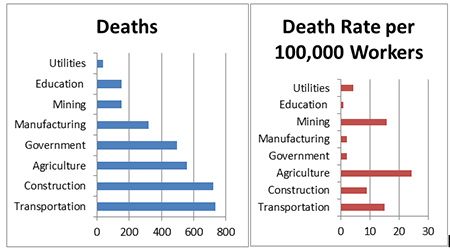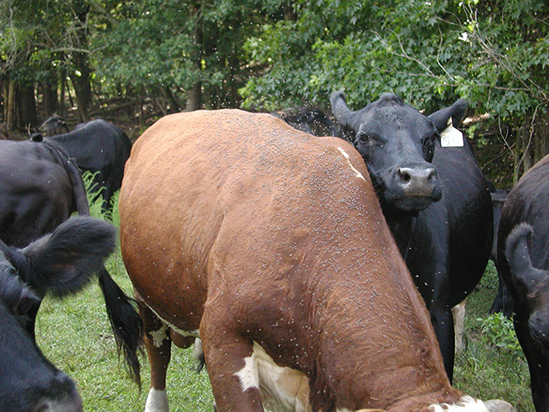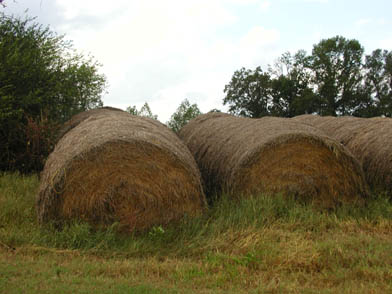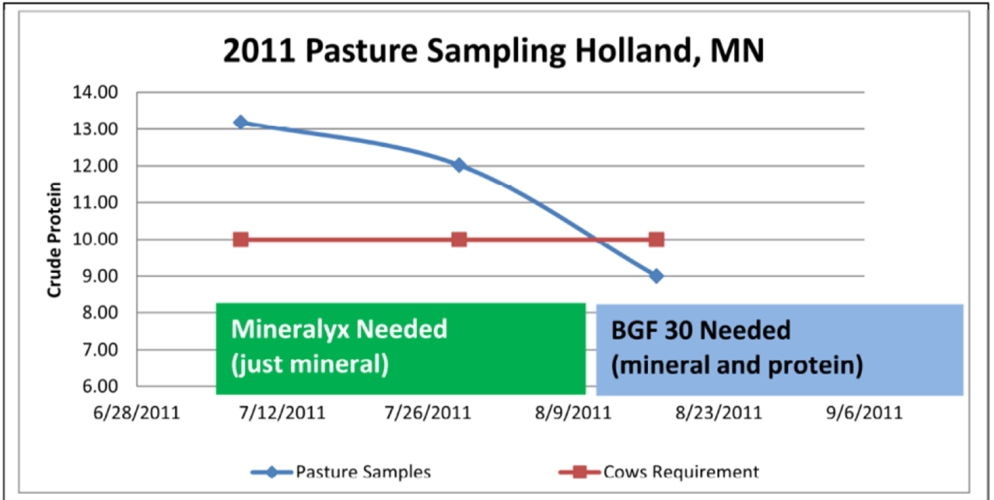For me, College NCAA Basketball is one thing that makes it possible to get through March and April. This year has been especially fun. Who knew what would happen. A number 11, three 12s, a 13, a 14 and a 15 all won. The Final Four had only one number 1 seed. How did these lower ranked teams win? They played the whole game. Many games went to the wire with teams fighting to the end.
Drought and grass tetany: Are the two related?
Drought followed by Grass Tetany. Sound like a contradiction? It can happen, especially when pastures were grazed heavily during a drought and /or during dormancy. Spring growing conditions, combined with some moisture on relatively “denuded” pasture ground, means the only forage that’s available to grazing cattle is the lush fast growing new grass. In ideal grazing conditions, there would normally be some old growth or residual forage that gets grazed along with new grass at turnout. This helps dilute or minimize the amount of new grass being consumed; the new grass which poses the greatest risk to magnesium deficiency or Grass Tetany.
Low stress cattle handling for a safe calving season
For many of us that have been around cattle the biggest risk is becoming complacent and not putting safety first. Agriculture is a dangerous occupation. The Bureau of Labor Statistics and The Center for Disease Control regularly collect injury and death rate information and the numbers are alarming. From 2003 to 2007, there were on average 583 agriculture related deaths per year. In 2011 agriculture had 557 deaths. Transportation and construction had more deaths, but agriculture had the highest death rate at 24.4 deaths per 100,000 workers. As the graphs below indicate, farming is the most dangerous occupation compared to other industries.
Getting minerals into your cow herd: Provide your cows the nutrients they need
We’re excited to begin communicating with customers on the Block Blog! Our goal is to share timely information and to provide information to help you manage your livestock operation.
On these pages you’ll find information on nutrition related topics, strategies for improving animal performances and efficiencies, and methods for increasing profitability.
When is the best time to put condition on your beef cows?
The answer is right now, today, if not sooner! Many of you have spring calving herds, and you have probably already weaned this year’s calves, or, you are about to. There are three main reasons that the time immediately after weaning is a great time to add condition to your cows, for very little investment.
Common sense tips for stretching your feed dollars
We are still a long way off from knowing the final effects of the most widespread drought in the United States in more than 50 years. Given current market volatility and fears of feed shortages, it only makes sense to do everything in your power to make the most of available feedstuffs. Below are a list of tips that can help you make the most efficient use of available feed.
CRYSTALYX fundamentals
2012 has been a tough year for many in our business so far. The negatives of the drought and its effect on the industry continue to make headlines. In times such as these I find it important to remind customers, prospects and fellow colleagues of the basic fundamentals of CRYSTALYX® supplement programs. During opportune or inopportune times (depending on how you see the glass as ½ full or empty), a lot of producers and sales people study alternatives which means there are new people looking at CRYSTALYX® programs.
Don’t throw away hay to improper storage
Hay is going to be more valuable than ever this year in light of the drought. For this reason, it is critical to maximize usable hay. Round bales are a popular means to harvest hay in many parts of the country. Proper round bale storage can make or break you. If your current storage method is allowing several inches of bale to rot, you might be surprised at how much hay is being wasted. The outer 4 to 6 inches, where most losses occur, make up a large percentage of the bale as shown in Table 1.
What is an organic trace mineral?
Nutritionists, along with producers, are always on the lookout for the next big thing to really improve livestock performance. In the case of nutritionists, we’re looking for products that pack a bigger nutritional punch per pound. Organic trace minerals are one of those advances that do bring a little more to the table. But what is an organic trace mineral?
Beef cow management options for declining pasture conditions
USDA’s Weekly Crop Condition Report includes pasture conditions for each state. Pasture conditions are currently as poor for this time of year as seen in the last 16 years. The data for the whole US and selected states in cattle country are listed below. Some of the drier and warmer months of the grazing season are still to come and expectations are that pasture conditions will continue to decline.




